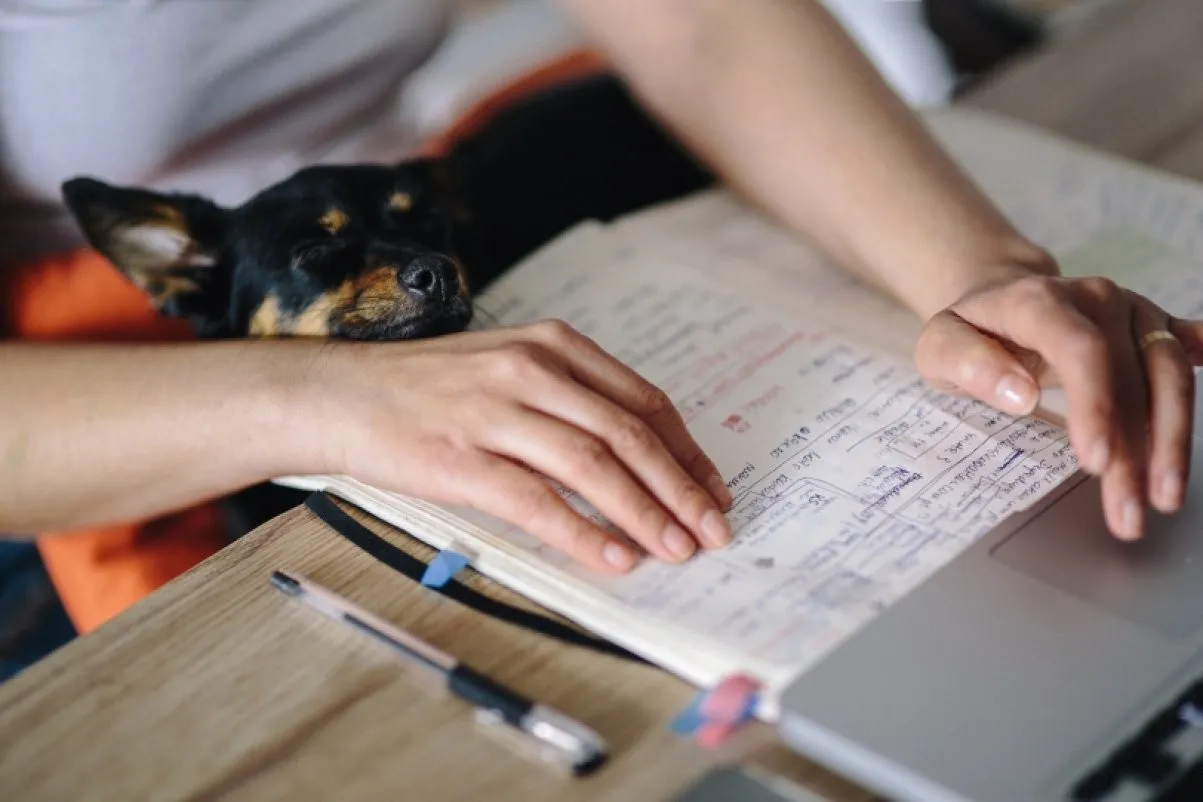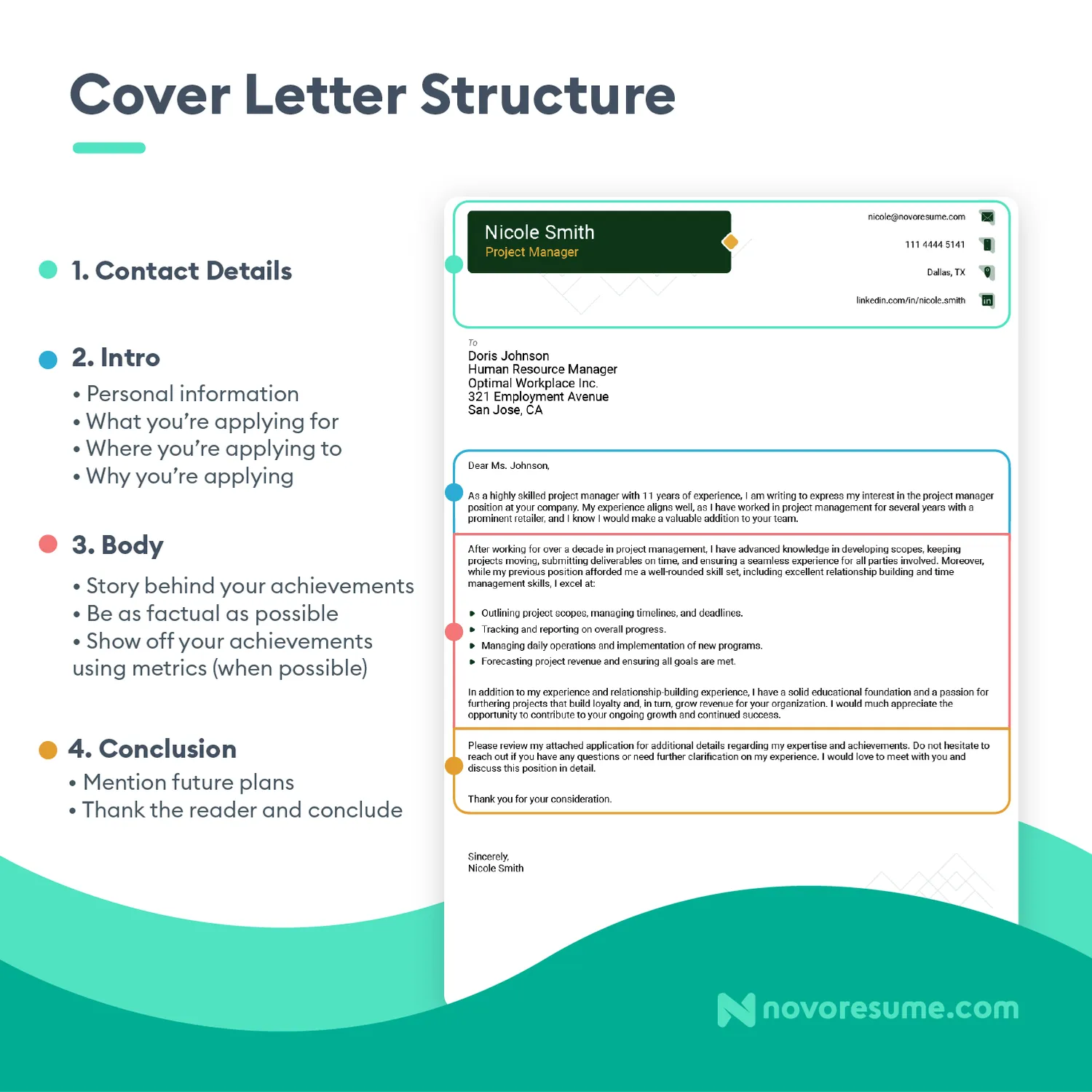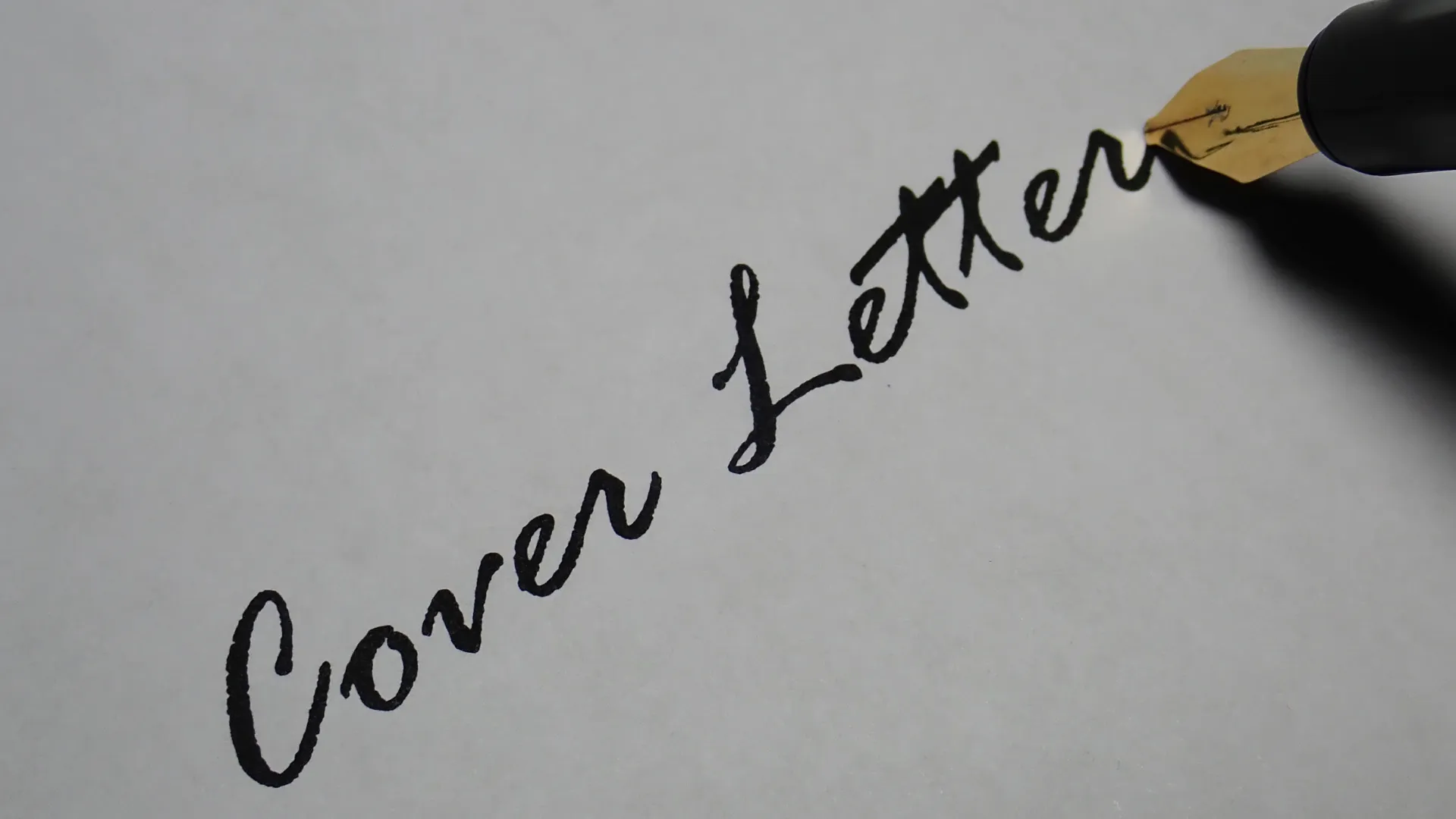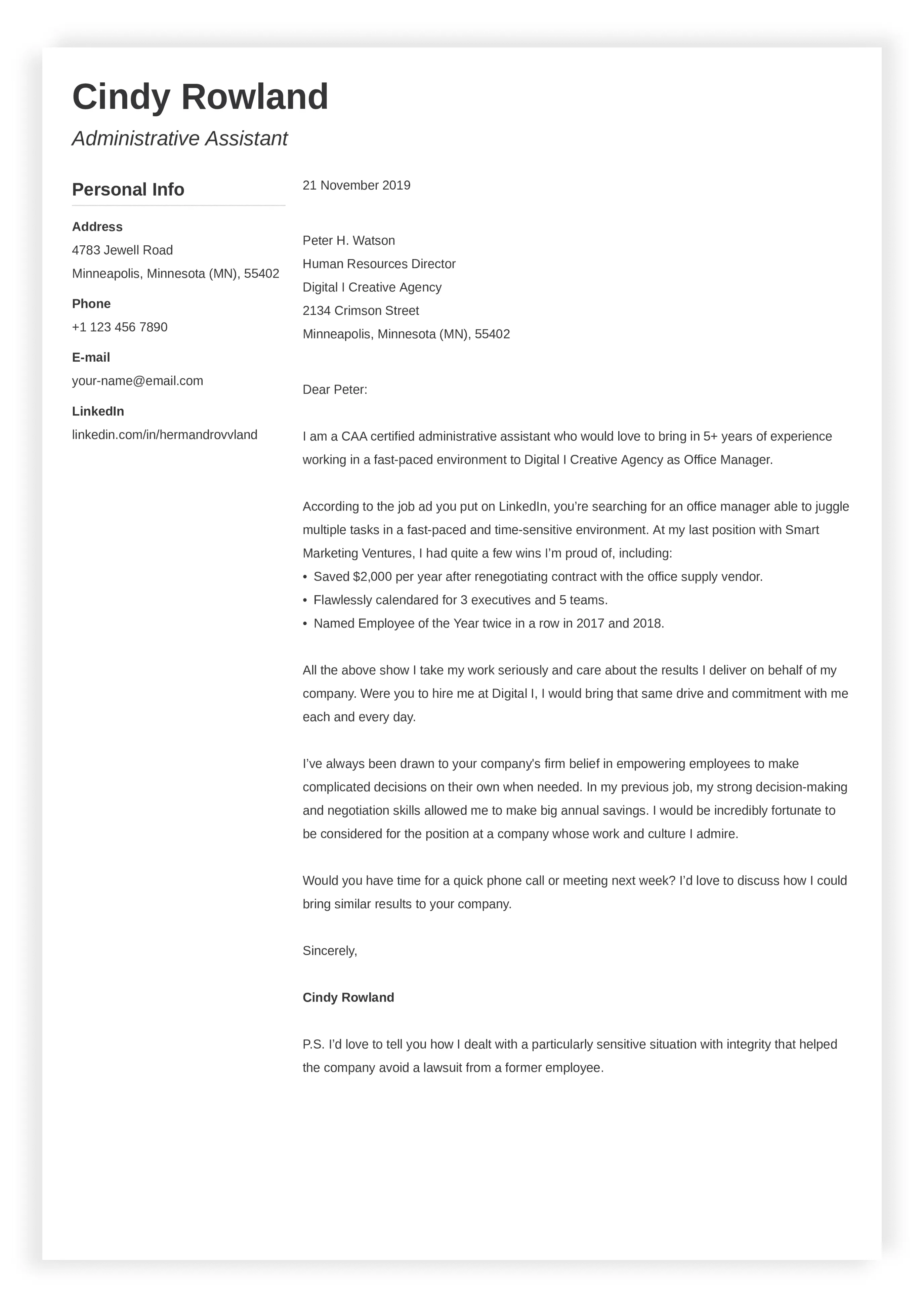What is a Cover Letter?
A cover letter is a crucial document that accompanies your resume when you apply for a job. It serves as your personal introduction to a potential employer, providing a space to elaborate on your skills, experience, and why you’re a perfect fit for the role. Think of it as your first chance to make a strong impression and showcase your personality and enthusiasm. It’s more than just a formality; it’s an opportunity to differentiate yourself from other candidates and demonstrate your genuine interest in the position and the company. Unlike a resume, which lists your qualifications, a cover letter allows you to tell a story, connecting your past experiences to the specific job requirements and illustrating how you can contribute to the company’s success. A well-crafted cover letter can significantly increase your chances of getting an interview.
Why is a Cover Letter Important?
In today’s competitive job market, a cover letter is not just a formality, but a necessity. It is your opportunity to make a lasting first impression on a potential employer and set yourself apart from other candidates. Many hiring managers use cover letters to assess a candidate’s writing skills, attention to detail, and communication abilities. A well-written cover letter demonstrates your understanding of the role and the company, as well as your enthusiasm for the opportunity. It allows you to highlight specific skills and experiences that directly align with the job requirements, making a compelling case for why you should be considered for an interview. Moreover, a cover letter helps you personalize your application, showing that you’ve taken the time to research the company and tailor your message to their needs. By crafting a thoughtful and well-structured cover letter, you increase your chances of capturing the recruiter’s attention and securing an interview, ultimately leading you closer to your dream job. A strong cover letter reflects your professionalism.
Key Elements of a Cover Letter

A compelling cover letter is built upon several essential components, each contributing to its overall effectiveness. Mastering these elements ensures your cover letter is polished and persuasive, capturing the attention of potential employers. From the header to the sign-off, each section plays a critical role in communicating your qualifications and suitability for the job. By understanding these key elements, you can create a cover letter that highlights your strengths and makes you stand out from the competition. Let’s delve into the crucial parts of a cover letter, ensuring you make a lasting impression on hiring managers. Understanding and implementing these elements will significantly improve your application.
Header
The header of your cover letter is more than just a formality; it’s the first thing a hiring manager sees, setting the stage for your application. It should include your contact information: your full name, phone number, email address, and optionally, your LinkedIn profile URL. The header should be at the top of the page, consistently formatted, and professional. The header should also include the date and the name and address of the hiring manager, if known. Ensure the header looks clean and easy to read, reflecting your attention to detail and professionalism. A well-designed header helps the recruiter quickly access your contact details and keeps your application organized. Use a font style and size that aligns with the rest of the document for a cohesive appearance. Accurate and well-presented header information is crucial for seamless communication. Always double-check for accuracy and consistency across all your application materials.
Greeting
Your greeting sets the tone for the rest of your cover letter. The best practice is to address the hiring manager by name, such as “Dear Mr. Smith” or “Dear Ms. Jones.” This shows that you’ve taken the time to research the company and personalize your application. If the hiring manager’s name is not available, use a professional alternative like “Dear Hiring Manager.” Avoid generic greetings like “To Whom It May Concern,” as they lack personalization and can make your application feel impersonal. Always spell the name correctly and double-check the gender to show respect and attention to detail. A personalized greeting instantly grabs the reader’s attention and makes your application more engaging. A professional and personalized greeting sets a positive tone and helps build rapport with the hiring manager. Ensure your greeting reflects your level of formality and respect.
Body Paragraph 1 [Introduction]

The introduction is your chance to grab the reader’s attention and make a strong first impression. Start by stating the specific position you are applying for and how you learned about the opportunity. Briefly mention your most relevant qualification or a key achievement that aligns with the job requirements. Your introduction should clearly and concisely state your purpose, drawing the reader into the rest of your letter. This section should be engaging and tailored to the specific job. If you are applying for a role at a particular company, express your enthusiasm for the organization and their mission. Conclude the introduction with a clear statement of your interest in the position and the company. The first paragraph sets the stage for your entire application; it should be compelling and grab the reader’s interest immediately.
Body Paragraph 2 [Skills and Experience]
This is where you demonstrate how your skills and experience align with the job requirements. Focus on the most relevant qualifications mentioned in the job description. Provide specific examples of your accomplishments, using the STAR method (Situation, Task, Action, Result) to illustrate your impact. Quantify your achievements whenever possible, such as “Increased sales by 20%” or “Managed a team of 10 employees.” Use action verbs to describe your responsibilities and achievements. Clearly connect your skills and experience to the needs of the role, showing the hiring manager what you bring to the table. Tailor this section to each job you apply for, highlighting the skills and experiences that are most relevant. By providing evidence of your capabilities, you build credibility and increase your chances of getting an interview. Always use examples that show your achievements and illustrate how you have added value in past roles.
Body Paragraph 3 [Why You’re a Good Fit]
In this paragraph, explain why you are a good fit for the company and the position. Show that you understand the company’s values and mission. Demonstrate your interest in the company by mentioning something specific that attracted you to the role or the organization. Discuss how your skills, experience, and enthusiasm align with the company’s culture. Express your eagerness to contribute to the team and the company’s success. Make it clear why you are uniquely qualified for this position and what you bring to the table. Research the company beforehand to demonstrate your genuine interest and tailor your message. Conclude by reiterating your interest in the position and expressing your desire for an interview. Make a personal connection with the company’s mission to showcase your commitment. Highlight how your values align with the company culture.
Closing Paragraph

Your closing paragraph should reinforce your interest in the position and your qualifications. Thank the hiring manager for their time and consideration. Express your enthusiasm for the opportunity to discuss your qualifications further in an interview. Include a call to action, such as indicating your availability for an interview. Reiterate your contact information if needed, though it should be present in your header. Keep the tone positive and professional. Show your eagerness to continue the conversation and express confidence in your ability to contribute to the company. Conclude with a strong statement that reinforces your interest and qualifications, leaving a lasting positive impression. It should leave the reader with a clear understanding of your interest and your desire to be interviewed. Make sure to thank them for considering your application.
Sign-off and Signature
The sign-off and signature are the final touches to your cover letter, adding a professional and polished finish. Choose a professional closing such as “Sincerely,” “Best regards,” or “Thank you.” Avoid overly casual closings. If you are submitting a digital cover letter, type your full name after the closing. If you are printing the cover letter, leave space for your handwritten signature above your typed name. A handwritten signature adds a personal touch, but is not always necessary in a digital world. Ensure the sign-off aligns with the overall tone of your letter, maintaining a formal and respectful tone. This demonstrates attention to detail and professional communication. Make sure your name is clearly visible. Always double-check to ensure the formatting and placement of your sign-off and signature are correct. This final element completes the professional presentation of your cover letter, setting a positive impression.
Cover Letter Format [Templates and Examples]
Utilizing templates and examples can significantly streamline the cover letter writing process and ensure your application meets professional standards. Templates provide a structured framework that can be customized to fit your specific skills and the job requirements. By starting with a template, you can save time and focus on tailoring the content to match the particular job and company. Examples offer valuable insights into how to structure your letter, craft compelling content, and highlight your skills and experience effectively. Both templates and examples should be used as guides, not exact replicas; always adapt the content to reflect your individual qualifications and the specific job description. Look for templates that align with your industry and experience level. Study examples from various sources to understand different approaches to cover letter writing. Customize the template and examples to reflect your unique skills and the job requirements. Make sure you create a cover letter that is completely unique to you. Do not copy and paste.
Formatting Your Cover Letter

Proper formatting is crucial for a professional cover letter. Good formatting enhances readability and makes a positive impression on the hiring manager. The overall visual appeal of your cover letter is critical. Correct formatting makes your letter easy to read and showcases your attention to detail. Your cover letter should look neat and easy to navigate. By paying attention to format, you create a polished, professional document that helps your application stand out. A well-formatted cover letter conveys your professionalism and improves your chances of success. Ensure consistency throughout the document.
Font and Font Size
Choosing the right font and size is important for readability and professionalism. Select a clear, easy-to-read font like Times New Roman, Arial, or Calibri. Avoid overly decorative or distracting fonts that may detract from your message. Use a font size between 10 and 12 points for the main text. This size is standard and ensures that your letter is easy to read without being too large or too small. Ensure the font is consistent throughout the entire document for a polished look. Bold and italicize text sparingly, using these styles for emphasis only when necessary. Choose fonts that are legible in digital and printed formats. Maintain consistency in font and size, and make sure your text is easy to read. Font selection can impact the overall appearance and readability of your cover letter.
Margins and Spacing
Appropriate margins and spacing are essential for a well-organized cover letter. Set the margins to one inch on all sides of the document. This standard margin size provides a balanced look and prevents text from appearing cramped. Use single-spacing within paragraphs and double-spacing between paragraphs. This spacing makes the text easy to read and allows the hiring manager’s eyes to move effortlessly through your letter. Avoid excessive white space, but don’t overcrowd the page. The consistent spacing adds to your professional appearance. Proper margins and spacing create a visually appealing document. Ensure the spacing is clean and consistent throughout your entire cover letter. Well-structured spacing will improve readability and presentation.
Proofreading Your Cover Letter

Proofreading is a vital step in the cover letter writing process. It ensures that your letter is free of errors and presents you in the best possible light. Proofreading ensures that your application is polished and professional. Taking the time to proofread will catch errors you may have missed. Proofreading is the final check to catch any typos, grammatical errors, or inconsistencies. Proofreading your cover letter demonstrates your attention to detail and commitment to excellence. Always proofread your cover letter carefully to avoid making a negative impression. A well-proofread cover letter showcases your professionalism and attention to detail. Make sure you leave the perfect final impression.
